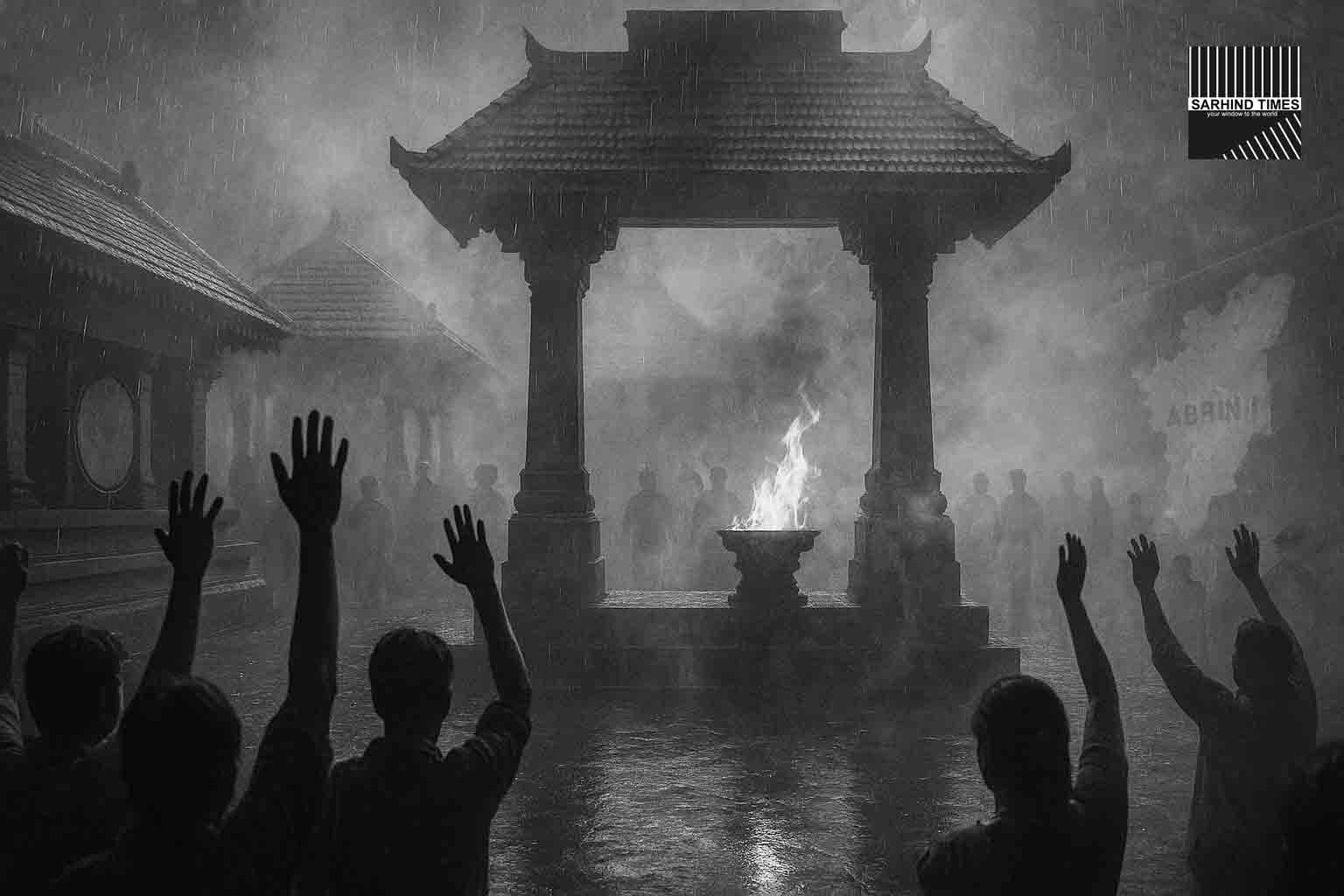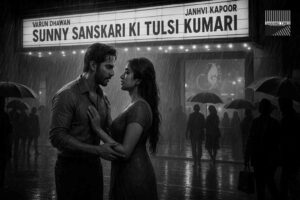Rishab Shetty’s mythic prequel defies conventional box-office gravity, nearing the ₹500-crore mark worldwide as it reignites audience fascination with folklore-driven cinema and rediscovers India’s storytelling roots.
Eleven days since release, Kantara: Chapter 1 continues its meteoric rise at the global box office, closing in on ₹500 crore and surpassing domestic benchmarks of several pan-India blockbusters. Rishab Shetty’s ambitious prequel has transcended linguistic barriers, drawing packed houses in both multiplexes and single screens across Tier-2 and Tier-3 cities. The film’s success signals a renewed appetite for mythic folklore cinema rooted in local ethos but told with cinematic scale.
🎬 Bengaluru, October 13 — The Myth Returns, Mightier Than Before
In an era dominated by sleek VFX-heavy spectacles and star-studded extravaganzas, a homegrown mythic saga has emerged once again from the coastal heartland of Karnataka to capture the nation’s imagination.
Rishab Shetty’s Kantara: Chapter 1 — a prequel to the 2022 phenomenon Kantara — has stormed the global box office, crossing ₹480 crore worldwide within eleven days of release and showing no signs of slowing down.
Trade analysts now predict the film could touch ₹500 crore before the end of the week, placing it among the top-grossing Indian films of the year and reinforcing Rishab Shetty’s reputation as one of the most original voices in contemporary Indian cinema.
🔥 A Cultural Phenomenon: From Folklore to Box-Office Firepower
The magic of Kantara: Chapter 1 lies not merely in its cinematic craft but in its cultural authenticity.
The film delves into the prequel mythology of Kantara (2022) — exploring the origins of the divine spirit and the generational bond between man, nature, and deity — themes deeply rooted in Tulu and coastal Karnataka folklore.
By combining regional mysticism with universal storytelling, Shetty has bridged the gap between rural oral tradition and global cinematic appeal.
“This isn’t just a sequel or a franchise. It’s an emotion that speaks to every Indian who believes in something larger than himself,”
— said Rishab Shetty during a promotional event in Hyderabad.
Audiences across India have echoed the sentiment, hailing the film for its raw spirituality, symbolic depth, and visceral storytelling.
💰 Box Office: Defying Gravity, Rewriting Records
According to trade tracker Sacnilk, Kantara: Chapter 1 has so far amassed:
- ₹367 crore domestic gross
- ₹113 crore overseas
- Total: ₹480 crore (as of Day 11)
This makes it the fastest Kannada film ever to reach the ₹450-crore mark, surpassing even the domestic tallies of Baahubali: The Beginning in comparable territories.
In Karnataka alone, the film has collected over ₹150 crore, outpacing previous state records held by KGF: Chapter 2 in certain circuits.
Regional Performance Snapshot
| Region | 11-Day Gross (₹ crore) | Occupancy (%) |
| Karnataka | 150 | 88% |
| Andhra Pradesh & Telangana | 75 | 72% |
| Tamil Nadu | 38 | 68% |
| Kerala | 30 | 70% |
| North India (Hindi) | 56 | 65% |
| Overseas | 113 |
Even more remarkable is its repeat viewership, with multiplex chains reporting unusually high weekend revisits.
“The Tier-2 and Tier-3 audience has turned this film into a festival,”
— said film trade analyst Taran Adarsh.
“This kind of occupancy after the second week is unheard of.”
🌾 The Power of the Regional Epic
While pan-India blockbusters have often relied on larger-than-life heroes and CGI-laden visuals, Kantara reaffirms that authentic storytelling grounded in local culture can yield far greater impact.
The film’s narrative — centered on precolonial conflicts between land, faith, and greed — draws heavily from ancient rituals like Daiva Narthana (divine dance) and Bhoota Kola (spirit worship).
By presenting these traditions with reverence rather than spectacle, Shetty has redefined the visual vocabulary of Indian cinema — crafting something at once intimate and epic.
“Kantara doesn’t imitate Western fantasy. It reclaims Indian spirituality as cinematic myth,”
— wrote film scholar Dr. Namrata Joshi in her cultural review.
The result is a folkloric blockbuster — something that belongs equally to the theatre and the temple.
🎥 Rishab Shetty: The Reluctant Superstar
Rishab Shetty, who wrote, directed, and starred in both Kantara films, remains refreshingly grounded.
His portrayal of Kaadubettu Shiva — a fierce yet vulnerable guardian of sacred land — has resonated deeply across demographics. The filmmaker’s decision to play the lead once again, instead of opting for a bigger star, adds to the project’s authenticity.
“I am not a star. I am a storyteller from the soil,”
— Shetty remarked in an interview with The Hindu.
That humility, combined with his creative conviction, has turned Shetty into a torchbearer for rooted Indian cinema, where mythology meets modern filmmaking discipline.
🎞️ The Cinematic Craft: Earth, Fire, and Faith
Visually, Kantara: Chapter 1 is a triumph of sensory filmmaking.
Cinematographer Arvind S Kashyap captures the lush rain-soaked forests of coastal Karnataka in stark, moody frames — alternating between divinity and dread.
The sound design by Rajan Nagendra immerses viewers into ritualistic atmospheres — every drumbeat echoing the heartbeat of the forest.
And Ajaneesh Loknath’s music, blending tribal chants with orchestral strings, has gone viral, with tracks like “Deva Daiva” and “Nadeyona” streaming in over 30 languages.
The film’s climactic 20-minute sequence, showcasing the divine possession ritual, is already being hailed as one of the greatest moments in Indian cinema this decade.
📣 Audience Response: Faith Meets Fandom
Social media has been ablaze with praise since opening day.
Fans have turned theatres into spiritual gatherings — with some viewers performing aarti before screenings, while others arrive dressed in traditional coastal attire.
Across cities like Mangaluru, Hubballi, and Udupi, theatres have reported instances of viewers chanting “Daiva Rakshisu!” (“May the spirit protect!”) during the climax — blurring the line between devotion and cinema.
In Mumbai, Chennai, and Kochi, critics have noted the film’s cross-cultural impact, with audiences comparing its mysticism to the likes of Pan’s Labyrinth and Apocalypto — yet undeniably rooted in Indian ethos.
🏆 Critical Acclaim: When Myth Meets Meaning
Critics have unanimously lauded Shetty’s ability to blend social realism with mystic allegory.
The film has drawn praise for its performances, screenplay, and cultural detailing.
“A visually arresting, spiritually charged narrative that transcends borders,”
— Variety
“Rishab Shetty redefines the mythic blockbuster — Kantara: Chapter 1 is raw, reverent, and revolutionary,”
— The Times of India
Several reviewers have even suggested that Kantara could find a place at international film festivals, marking a watershed for Indian regional cinema on the world stage.
🎟️ Trade and Distribution: A Grassroots Juggernaut
Unlike mainstream releases backed by massive pre-release marketing, Kantara: Chapter 1 relied primarily on organic word-of-mouth.
Its release strategy mirrored its predecessor — a staggered language rollout starting with Kannada and expanding to dubbed versions in Hindi, Telugu, Tamil, and Malayalam after strong initial traction.
This slow-burn approach, combined with grassroots distribution networks, helped maintain momentum and allowed the film to dominate regional screens without saturation fatigue.
Major multiplex chains such as PVR Inox and Cinepolis have reported consistent occupancy rates of 75–90%, while single-screen exhibitors in Belagavi, Mysuru, and Dharwad are recording houseful shows even on weekdays.
“It’s a people’s blockbuster. No PR machine could buy this kind of word-of-mouth,”
— said Girish Johar, trade analyst.
🎯 Beyond Box Office: Cultural and Economic Ripples
The success of Kantara: Chapter 1 is more than a cinematic win — it’s a cultural and economic ripple.
Local tourism boards have already reported surges in visits to Kundapura, Dakshina Kannada, and Udupi, regions that inspired the film’s setting.
Handicrafts and local temple art linked to Bhoota Kola traditions have seen renewed demand, creating livelihood opportunities for artisans.
Moreover, the film’s triumph underscores a new trend: regional storytelling as global IP.
Much like RRR and KGF, Kantara proves that cultural specificity can become cinematic universality.
🧠 Thematic Analysis: Faith, Power, and Nature
At its heart, Kantara: Chapter 1 explores timeless themes — faith, ecological balance, and the moral cost of greed.
Set in precolonial India, it depicts a community’s spiritual pact with nature — and the tragic consequences when that pact is broken.
The narrative subtly critiques unchecked development and corporate exploitation, echoing real-world environmental debates.
In that sense, Kantara becomes both a folklore and a fable for the modern world, reminding viewers that progress devoid of respect for the sacred leads to ruin.
🌍 Global Resonance: The World Listens to a Local Song
Internationally, Kantara: Chapter 1 has found surprising resonance.
In the UAE, it has outgrossed Salaar’s first-week collection; in the UK, it entered the Top 10 box office chart for a week — a rare feat for a Kannada film.
In North America, the film crossed $8.5 million, with screenings in 260 theatres — largely driven by Indian diaspora audiences seeking authenticity.
“It’s incredible to see non-Indians engage with our myths,”
— said Vijay Kiragandur, producer at Hombale Films.
“Our stories are now part of the global narrative.”
🧭 What’s Next: The Kantara Universe Expands
With Kantara: Chapter 1 soaring past expectations, Hombale Films is already charting the next step — expanding the Kantara universe through spin-offs, documentaries, and digital archives of real-life Bhoota Kola rituals.
There’s also buzz about a third film that will chronologically bridge Chapter 1 and the original Kantara, completing a mythological trilogy.
If realized, this could mark India’s first indigenous cinematic universe rooted in folklore, rivaling Western franchises in scale but anchored in spirituality.
🔚 Conclusion: A Film, A Faith, A Phenomenon
‘Kantara: Chapter 1’ has achieved what few films manage — turning folklore into phenomenon, devotion into box-office dominance, and art into cultural identity.
As the film races toward ₹500 crore, it stands not just as a triumph of Kannada cinema but as a testament to the power of rooted storytelling in a globalized world.
In an age of algorithms and franchises, Rishab Shetty’s creation reminds India of something deeper — that stories born from soil never die; they only evolve.
#Kantara #BoxOffice #RishabShetty #IndianCinema #PanIndia #FilmBiz #KannadaCinema #SarhindTimes























+ There are no comments
Add yours